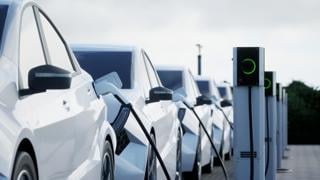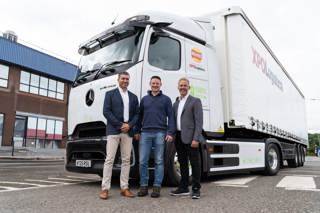By Mike Nakrani, CEO at Vev
The simple answer is yes; it will raise awareness and public consciousness of the need to adopt electric vehicles (EVs). So it will absolutely be a good thing.
However, it isn't the primary regulatory driver of fleet electrification. The ZEV (zero-emission vehicle) mandate is the stick that’s having an impact – imposing strict regulations on van and car sales.
To avoid escalating fines, OEMs are adjusting their pricing strategies including adding the cost of fines they will face across their diesel fleet. This will be the stick that drives EV adoption. And there are similar regulations and penalties applying to heavy goods vehicles (HGVs) in the EU.
When the ICE ban moved to 2035 last year, some fleets said OK, we’ll delay our electrification plans. But most I spoke to continued with their long-term plans; businesses don’t like inconsistency, and changing dates make business and investment planning difficult.
A Government manifesto commitment and reiterated by the BVRLA and Fleet News recently, the proposal to reinstate the 2030 ICE ban for new cars and vans continues to be a hot topic.
What’s key is that it applies only to fully ICE vehicles, not hybrids. So as of today, you’ll still be able to buy hybrid vehicles up to 2035.
The bottom line is that fleets account for 10% of the UK’s total carbon emissions (according to Government statistics) so fleets do need to determine their electrification strategy. It’s a choice between leading or following and fleet owners will do the cost-benefit analysis for their own business.
Early adopters will become leaders from learning and acquiring the necessary new skills and knowledge to run an EV fleet. Those who transition slower risk lagging behind and facing a future supply chain crunch which could wipe out any anticipated lower costs from the delay.
Fleets therefore need to plan early to successfully steer their transition profitably.
This means taking a digital-first approach to electrification. An EV fleet essentially runs on data insights – from power to chargers, routes, schedules, shift patterns, seasonality, weather and more.
Stage one for fleet electrification is therefore to make informed decisions about the transition based on data from the existing fleet – telematics, power and operations.
After analysing these data, we give our fleet operator customers phased implementation plans to go at the right pace to suit the business’ sustainability goals, and covering key aspects like power demand, charging infrastructure and route planning.
Management platforms give fleet operators the data insights to drive EV fleet efficiency up and manage costs down.
An important part of this assessment is right-sizing the fleet’s power requirements. By evaluating power consumption, we can determine if a grid upgrade or solar and battery storage is needed and build a strategy to plan costs and anticipate future needs.
Similarly, upfront capex costs for vehicles need to be calculated as part of a total cost of ownership (TCO) model.
EVs require less maintenance than diesel and there are other cost-efficiency gains to be found in EV fleet operation.
By taking a forensic approach to power usage and developing a micro-grid with solar generation and battery storage, significant cost savings can be made in power consumption.
Driver training is another factor; range can be increased by 20% with proper EV driving. Like an Olympic cycling team, EV fleet performance can be optimised through multiple marginal gains.
Not all EVs in a fleet need to be purchased new; vehicle conversion from diesel to electric is a cost-effective option. This is also a fantastic way to further reduce carbon emissions from the manufacturing process.
There are many considerations for fleet operators in the shift, and there are experienced partners that can help them do this. There is also a pressing need to hire the right people.
A growing sector needs a growing workforce, and the complexities of the EV transition require specialist skills, from service and maintenance through to data and energy management.
Along with the sticks such as the ICE ban and ZEV, our industry also needs carrots. The bus sector is leading the way because of Government funding from ZEBRA, and other sectors are asking for similar support.
There is limited public funding available for HGVs today, focused on long-term trials. More is needed now, to create the momentum that will push the market ahead and bring additional private investment.
Across multiple specialised sectors, some fleets are already acting as pioneers in the transition. Those that are willing to embrace the change and adjust operations to go 100% electric will also reap the rewards of economies of scale.




















Login to comment
Comments
No comments have been made yet.